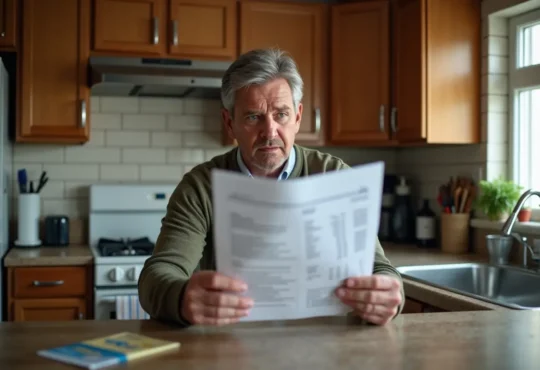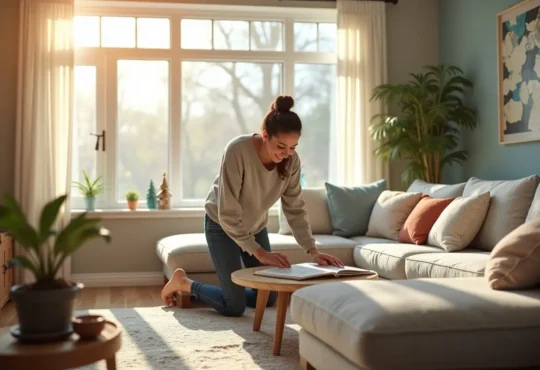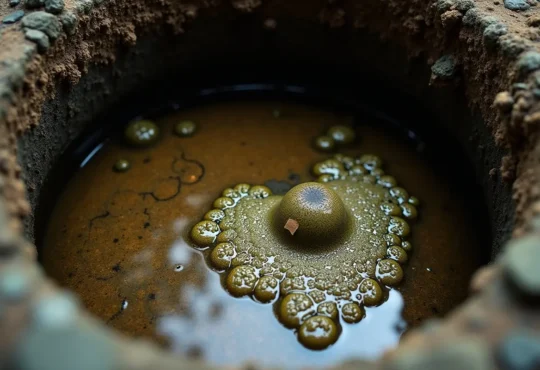
How to Unclog a Kitchen Sink
Preparing delectable meals often leaves remnants that find their way down the kitchen sink drain. While small food scraps typically pose no issue, larger portions can lead to clogs. Nonetheless, refrain from reaching for harsh chemical drain cleaners right away. Instead, try eco-friendly methods in this guide to unclog your kitchen sink.
Contents
A Natural Approach: Baking Soda and Vinegar to the Rescue
Before considering chemical interventions, explore the power of two common household ingredients: baking soda and vinegar. This dynamic duo offers a safe, eco-friendly, and cost-effective solution to clear clogs and restore your sink’s functionality.
Science Behind the Fizz
The magic behind the baking soda and vinegar hack lies in a simple chemical reaction. Vinegar, a dilute acetic acid, reacts with baking soda (sodium bicarbonate) to produce carbon dioxide gas. This gas creates a fizzing, foaming action that helps dislodge and break down stubborn blockages.
Step-by-Step Guide to Unclogging with Baking Soda and Vinegar
- Prepare the Solution: Pour one cup of baking soda directly into the clogged drain.
- Add Vinegar: Follow up with one cup of vinegar, allowing the mixture to fizz and react.
- Let it Sit: Leave the solution undisturbed for 10-15 minutes to maximize its effectiveness.
- Flush with Boiling Water: After the allotted time, pour a kettle of boiling water down the drain to flush away any remaining debris.
Repeat as Necessary
If the clog persists after the initial treatment, feel free to repeat the process. The baking soda and vinegar method may require multiple applications to break through stubborn blockages fully.
Inspect the Drain for Visible Obstructions
In some cases, the clog may be caused by a foreign object lodged in the drain, such as a bone, utensil, or other debris. Before proceeding with more intensive methods, use a flashlight to peer into the drain and check for visible obstructions. If you spot an item, carefully retrieve it using tongs or needle-nose pliers.
Plunger Power Play
If the clog persists after trying the baking soda and vinegar method, it’s time to bring out the plunger. This trusty tool can create the necessary suction force to dislodge and clear blockages.
Plunging Techniques for Effective Unclogging
- Fill the Sink: Add a few inches of water to the sink basin.
- Position the Plunger: Place the plunger directly over the drain opening, ensuring a tight seal.
- Plunge with Force: Vigorously plunge up and down, maintaining consistent pressure.
- Repeat if Necessary: If the water doesn’t drain immediately, repeat the plunging process several times.
Precautions for Sinks with Garbage Disposals
If your kitchen sink has a garbage disposal, take extra precautions to prevent potential damage. Before plunging, clamp the dishwasher line where it connects to the disposal to prevent the hose from popping off due to the pressure.
Drain Snake: Reaching Deeper Blockages
For stubborn clogs that resist plunging, a drain snake (also known as a plumber’s snake or auger) may be necessary. This flexible, coiled tool can navigate deeper into the drain pipes, allowing you to dislodge and retrieve obstructions that are out of reach.
Using a Drain Snake Effectively
- Prepare the Snake: Unwind the cable and feed it into the drain opening.
- Twist and Push: Gently twist and push the snake down the drain, allowing it to navigate through the pipes.
- Dislodge the Clog: When you encounter resistance, crank the handle to dislodge and retrieve the blockage.
- Flush with Water: After removing the clog, flush the drain with hot water to clear any remaining debris.
Tackling the P-Trap: A Closer Look
If the clog persists, the issue may lie within the P-trap, a curved section of pipe beneath the sink. This trap can accumulate food particles, grease, and other debris over time, leading to blockages.
Disassembling and Cleaning the P-Trap
- Prepare the Area: Place a bucket beneath the pipes to catch any water or debris.
- Disconnect the P-Trap: Unscrew the connectors and carefully remove the curved pipe section.
- Clean the Trap: Use a wire brush or plumber’s snake to remove any buildup within the P-trap.
- Reassemble and Test: Reconnect the P-trap and run hot water to ensure proper drainage.
Preventing Future Clogs: Best Practices
Once your kitchen sink is flowing freely, implement preventative measures to avoid future clogs and maintain optimal drainage.
Items to Avoid Pouring Down the Drain
- Grease, oils, and fats
- Meat scraps
- Coffee grounds
- Eggshells
- Starchy foods (pasta, rice, bread)
- Fruit peels and pits
- Gum
- Paint
- Paper products (paper towels, food wrappers)
Additional Tips for Maintaining Clear Drains
- Dispose of grease and oils in a separate container, not down the drain.
- Compost or mulch coffee grounds and other organic waste.
- Avoid overloading the garbage disposal; grind food in small batches.
- Regularly flush the disposal with a vinegar and water solution to remove buildup.
- Consider scheduling professional drain cleaning services to maintain optimal plumbing health.
When to Call in Professional Assistance
If all DIY efforts fail to resolve the clogged kitchen sink, it’s time to seek professional help. Experienced plumbers have access to specialized tools and techniques to tackle even the most stubborn clogs effectively. Prolonged standing water can lead to potential health hazards, making a severely clogged sink an emergency situation.
Services Offered by Professional Plumbers
- Drain cleaning and unclogging services
- Garbage disposal repair and replacement
- Emergency plumbing repairs (available 24/7)
- Routine maintenance and inspections
Enlisting the expertise of a licensed plumber can save you time, effort, and potential costly repairs down the line.
FAQs
What is the best way to unclog a kitchen sink?
The best eco-friendly way to unclog a kitchen sink is using baking soda and vinegar. This natural solution creates a fizzing reaction that breaks down clogs without harsh chemicals. If the clog persists, use a plunger or drain snake to reach deeper into the pipes.
How do you unblock a kitchen sink that won’t drain?
First, try the baking soda and vinegar method, then plunge and use a drain snake. Disassemble and clean the P-trap if needed. For stubborn clogs, call a professional plumber for advanced techniques.
What can you pour down the sink to unclog it?
Avoid harsh chemical cleaners; pour a baking soda and vinegar mixture down the clogged sink. This natural solution is safe for pipes and the environment. Boiling water can also help melt and flush away grease or soap buildup.
What is the best home remedy for unblocking a sink?
Again, the best home remedy for unblocking a sink is the tried-and-true combination of baking soda and vinegar. Other effective home remedies include using a plunger, a drain snake, or disassembling and cleaning the P-trap beneath the sink.





 Hi I'm Joe.
Hi I'm Joe. 